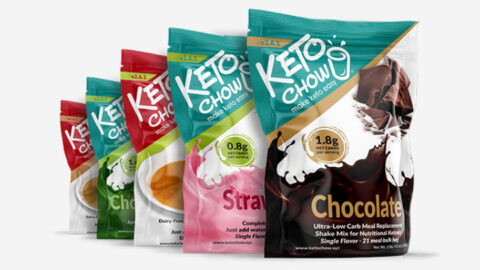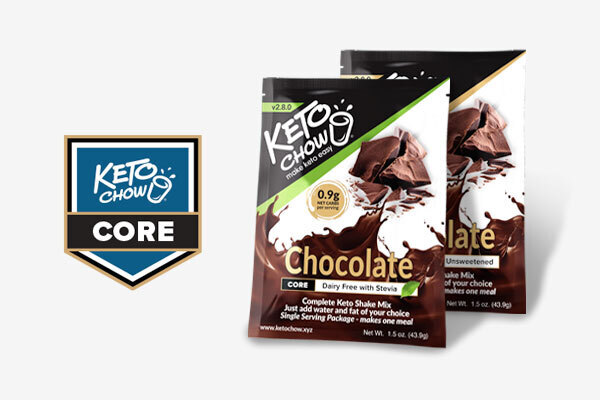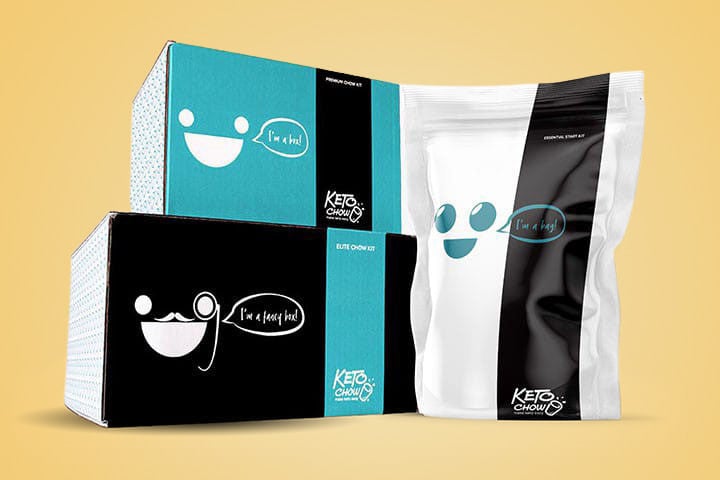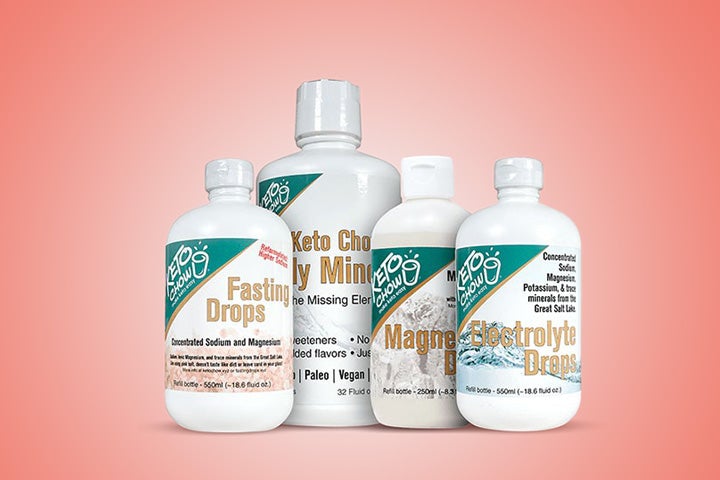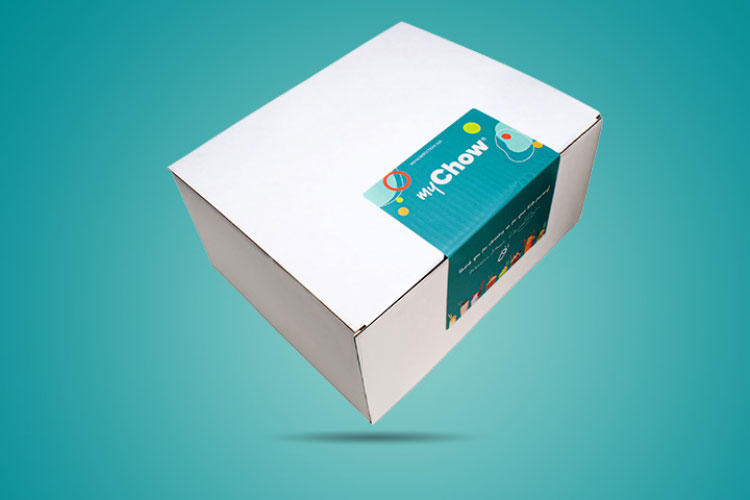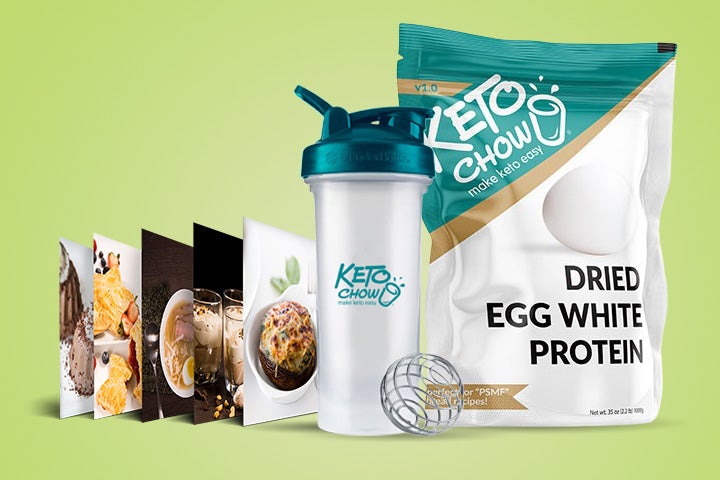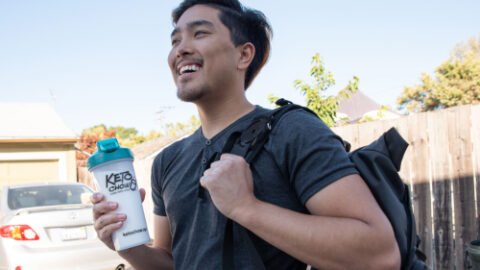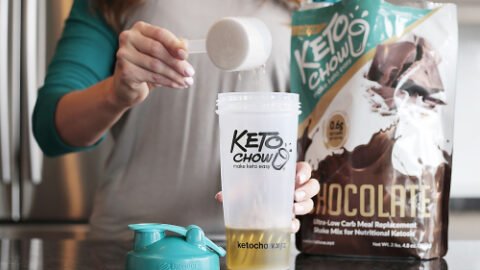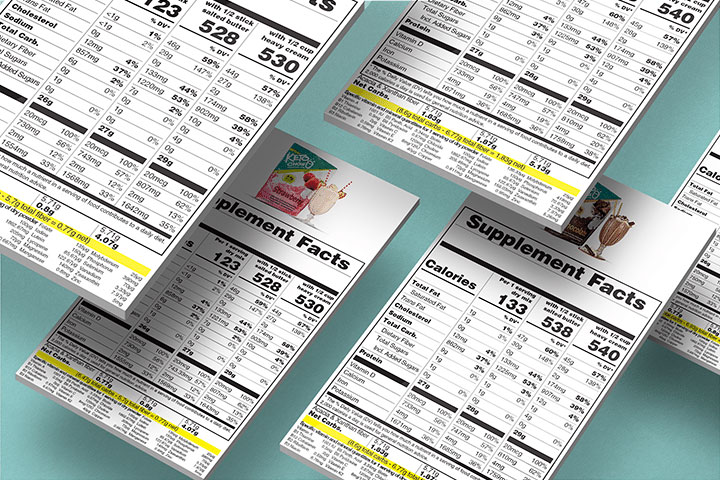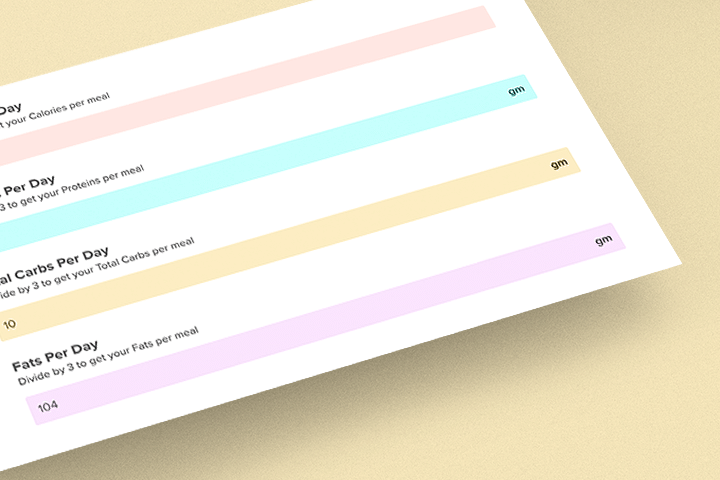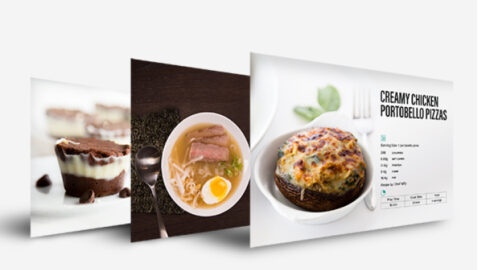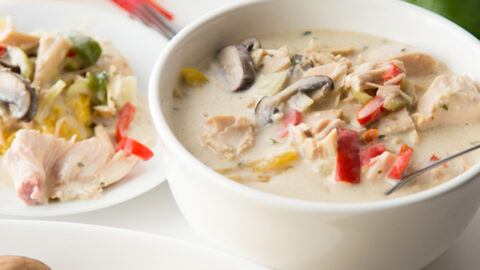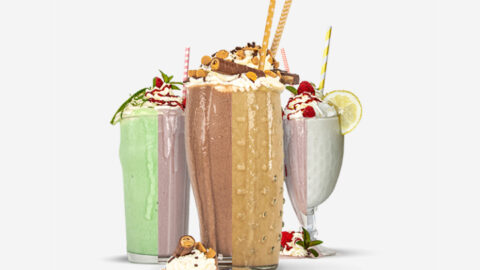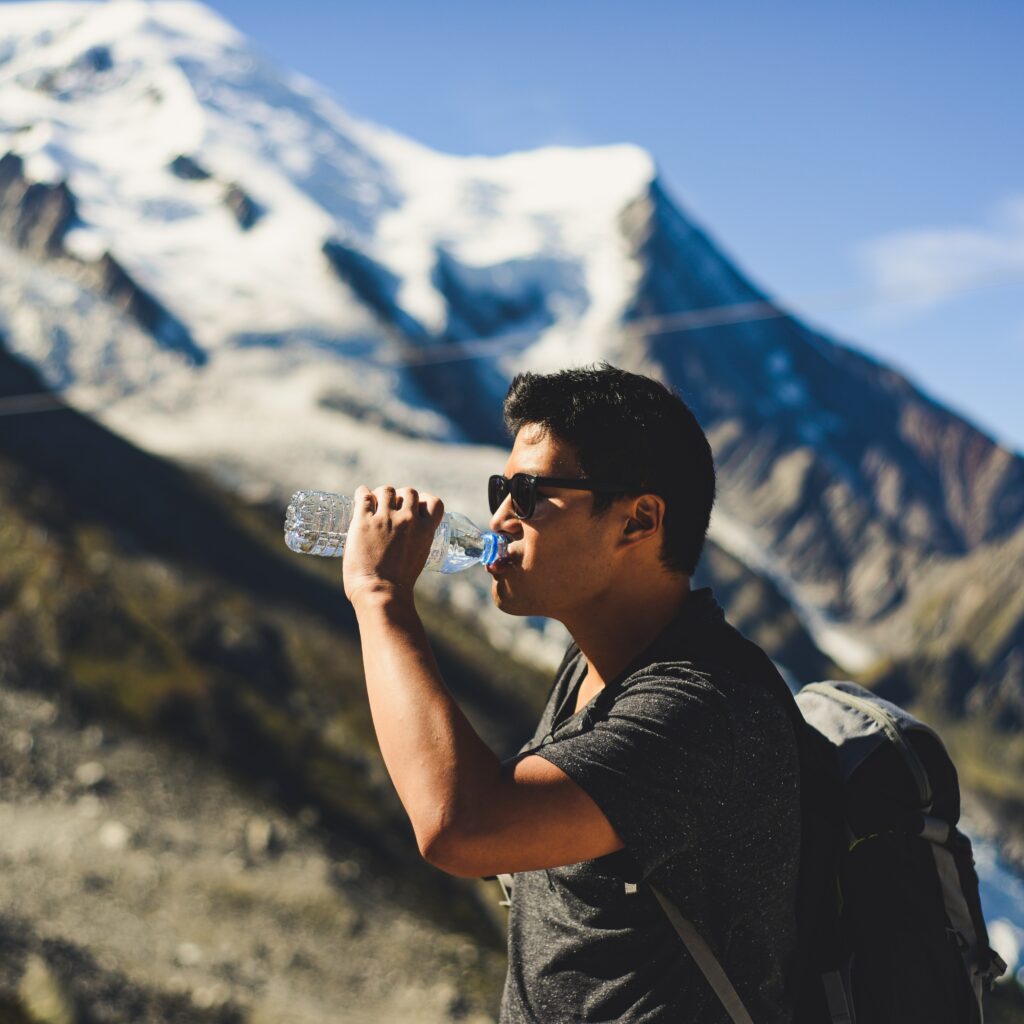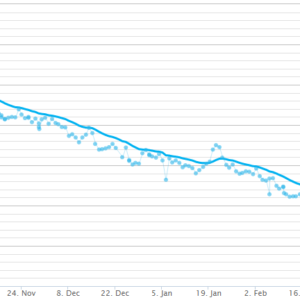When you follow a keto diet, being healthy and feeling your best isn’t only about protein, fat, and carbs—making sure you get enough electrolytes is critical. This helps with energy levels, avoiding “keto flu,” and making sure your body has what it needs for proper neurological function, healthy blood pressure, muscle function, and more.
(Check out this article for details on what electrolytes are and why they’re so important.)
So, what are the best ways to get electrolytes on keto?
Food is best, but what electrolytes do you need?

Food is generally the preferred way to get micronutrients (vitamins and minerals), including electrolytes. As much as is known about micronutrients in food, there’s a lot still yet to learn.
Research constantly uncovers new therapeutic uses for vitamins and minerals, and some of these might depend on interactions between them as well as other components in food—some of which might not have even been discovered yet!
Compared to supplements, food is more likely to provide a broader complement of compounds that may play a greater role in beneficial outcomes compared to any one nutrient by itself.
The main electrolytes of concern on a keto diet are sodium, magnesium, and potassium. Let’s see what the best low-carb food sources of these are.
1. Sodium
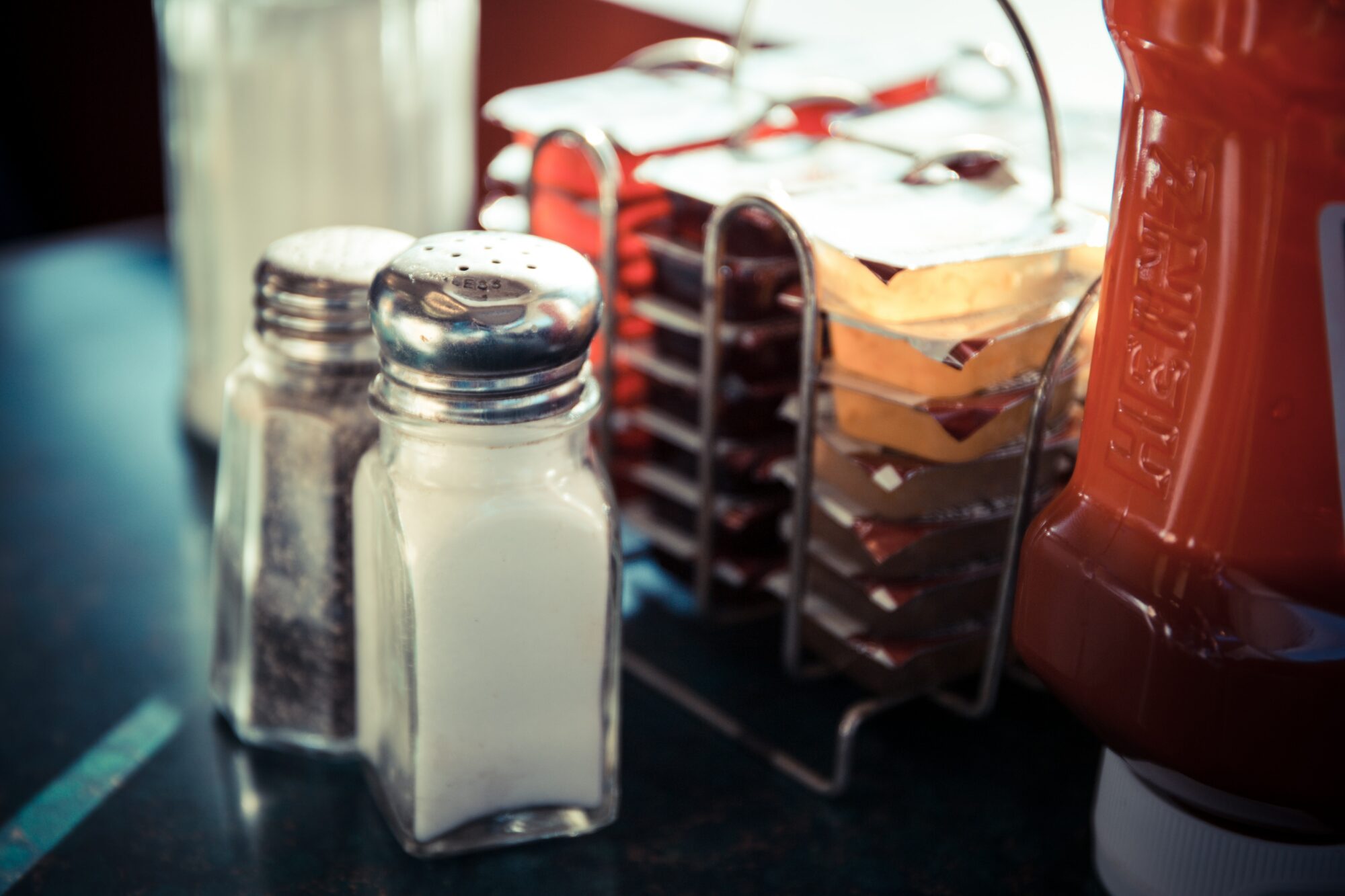
For decades we’ve been warned against eating a high-sodium diet, but when eating keto, most people actually need more sodium than they did on a high-carb diet. If you have high blood pressure or another sodium-sensitive condition, go easy, but even in hypertension, the underlying cause is often too much sugar, rather than too much salt.
The easiest way to get sodium on a keto diet is to be generous with the salt shaker. Another way to get a quick hit of sodium is to make a cup of broth using a bouillon cube. (If you make homemade broth, be sure to add salt. Bone broth is not naturally high in sodium.)
You can also include sodium-rich foods in your diet, and there are plenty that are great for a very low-carb diet:
- Bacon, sausage, salami, pepperoni, cured meats
- Lunchmeat (cold cuts)
- Cheese
- Olives, pickles
- Beef jerky
- Seaweed
- Pork rinds
- Salted nuts
- Select shellfish & crustaceans (mussels, lobster, oysters, scallops)
2. Potassium
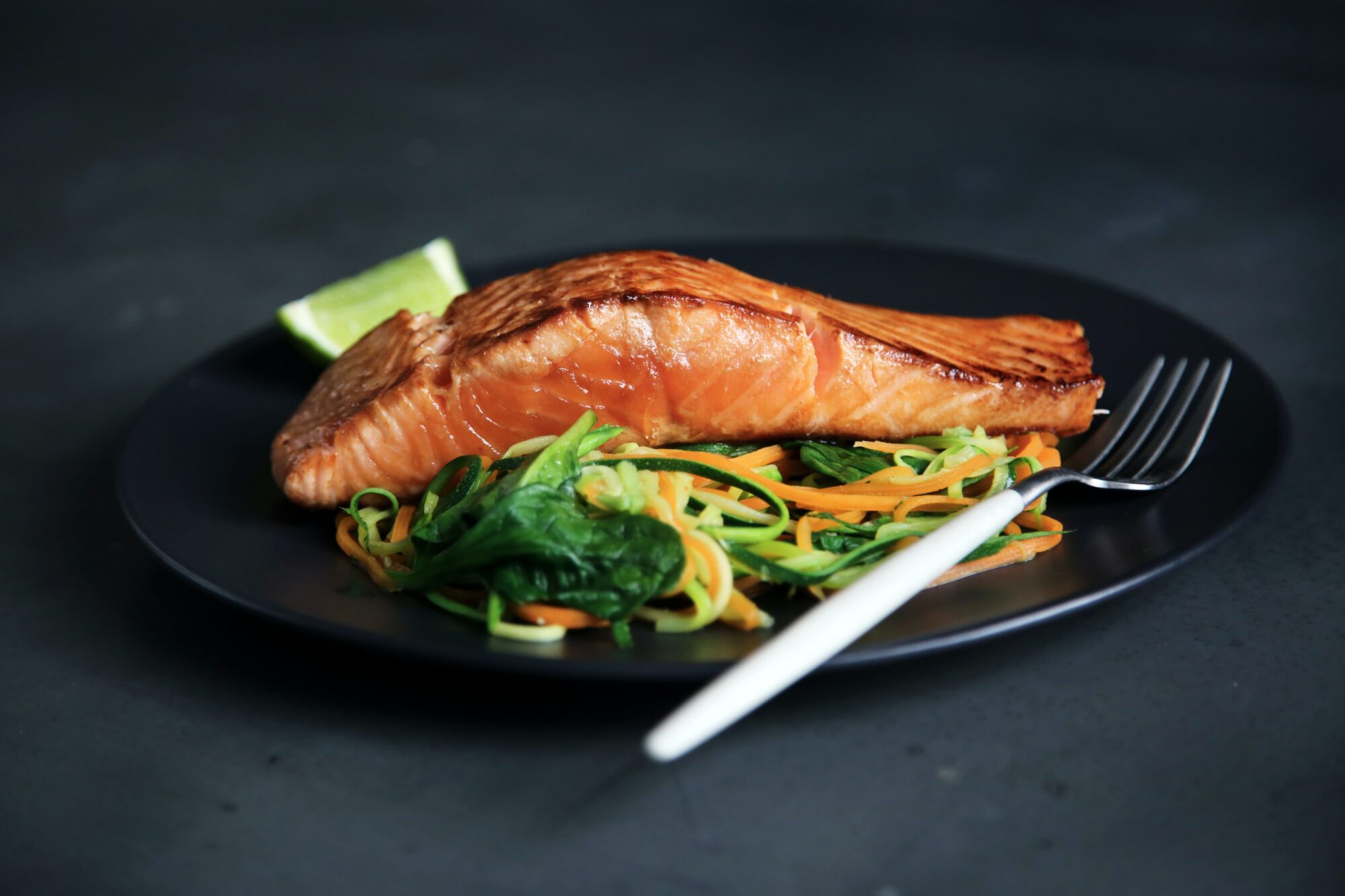
Potassium is considered a “nutrient of concern” in the most recent iteration of the Dietary Guidelines for Americans (2020-2025). This means many people fall short of the amount that constitutes an “adequate intake”—3400 mg/day for men and 2600 mg/day for women.
Fortunately, it’s not hard to get potassium on a keto diet, because many very low-carb foods are good sources:
- Dairy products
- Leafy greens
- Beef, pork, game meat
- Fish & shellfish
- Tomatoes & tomato products
- Avocado
Another way to get more potassium is to use salt substitutes. As mentioned above, there’s no reason to fear sodium on a keto diet but mixing things up once in a while and seasoning your food with a salt substitute can help you get additional potassium.
A product sold as “lite salt” is half regular salt (sodium chloride) and half potassium chloride. (And it’ll give you a hefty 350 mg of potassium in just a quarter teaspoon.) A different product, marketed as “Nu-salt,” is 100% potassium chloride and provides a whopping 650 mg per quarter teaspoon.
This is an easy way to increase potassium intake but the flavor is intense and might be off-putting for some people.
3. Magnesium

Compared to sodium and potassium, it can be more difficult to get enough magnesium on a keto diet. In general, animal foods aren’t very rich in magnesium. (Seafood provides slightly more magnesium than foods from land-based animals, such as beef or poultry.)
The richest food sources are leafy greens (magnesium is the central element in the chlorophyll molecule that gives them their green color), but people who need to keep their carb intake ultra-low might not be able to take in enough of these on a regular basis to get adequate magnesium.
Nuts and seeds are good sources of magnesium, but consuming too much of these high-fat foods can interfere with weight loss. (Overdoing fat on keto is a common reason for slow or stalled weight loss.) Plus, the magnesium in nuts and seeds is bound to phytic acid, which makes it less bioavailable (meaning your body doesn’t absorb as much of it).
Still, that doesn’t mean you can’t get a fair amount of magnesium on keto. Here are some low-carb sources of this mineral:
- Leafy greens
- Nuts & seeds
- Seafood
- Dark chocolate
Supplement if needed
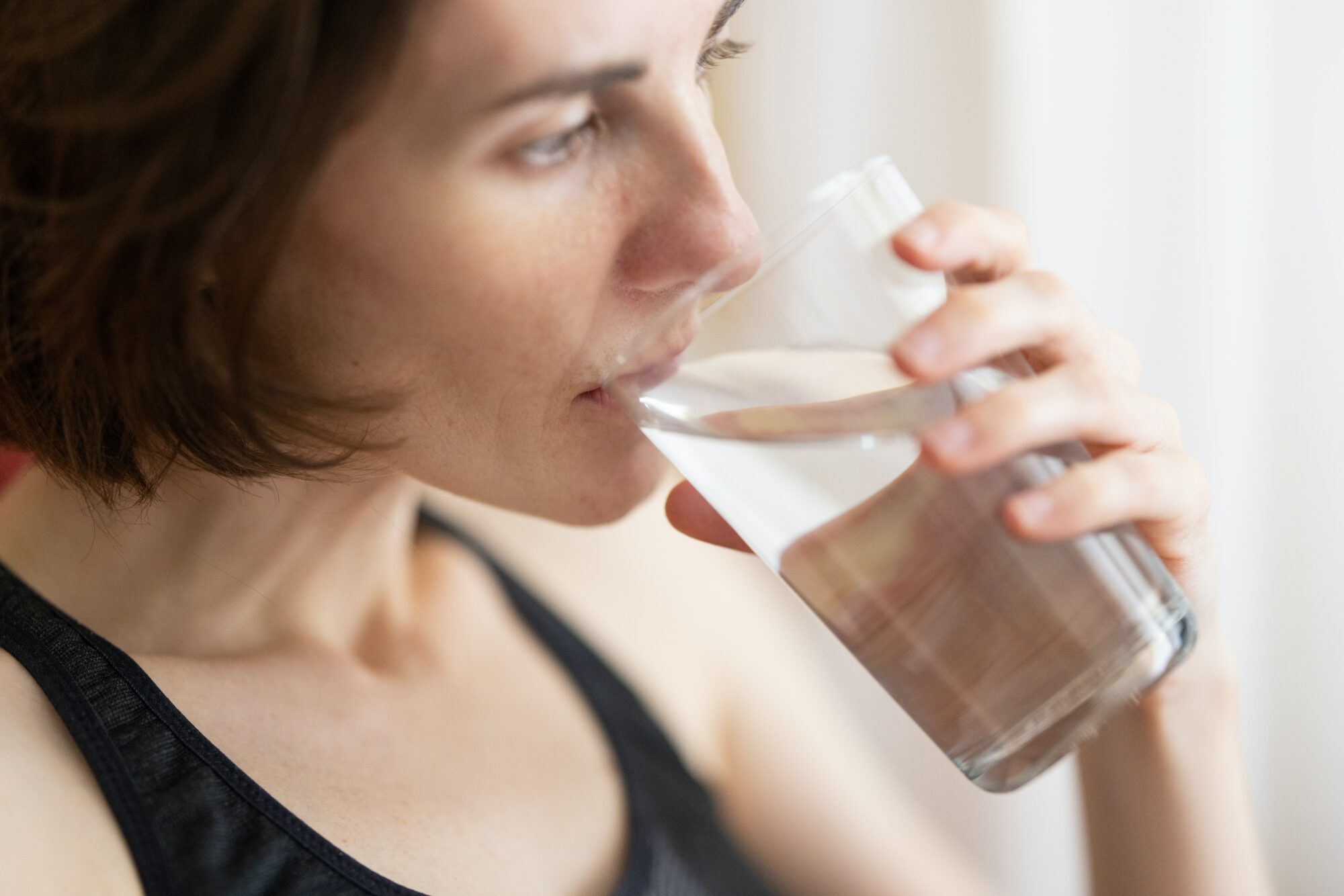
While food is the preferred way to get micronutrients, but life happens. When your diet is less than optimal, supplements can help ensure you get what your body needs.
There may also be times when your diet is great but you need more electrolytes than you can get from food alone—such as if you exercise intensely and sweat a lot or if you have a stomach bug and are experiencing vomiting or diarrhea. (The body loses electrolytes in sweat, urine, feces, and vomit.)
Sodium
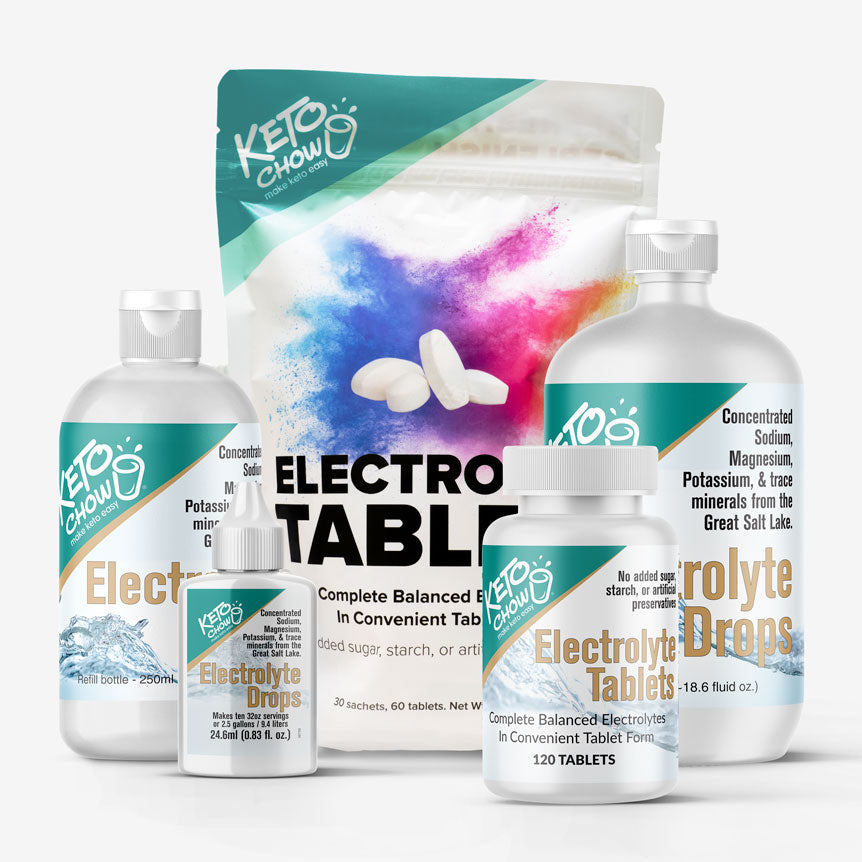
Considering that in most cases, salt is added to food rather than food being naturally sodium-rich, in a way, salt can be considered a “sodium supplement.” If you don’t care for the taste of salt but you need more sodium on your keto diet, you can use salt capsules or tablets. Or electrolyte drops.
Magnesium
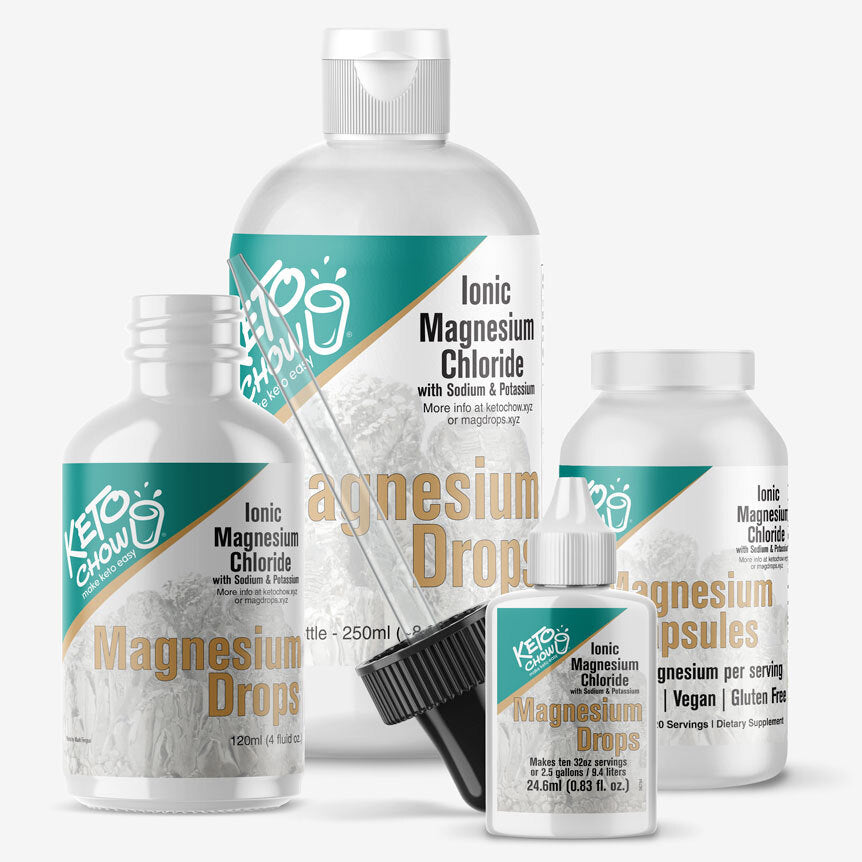
For supplementing magnesium, there are several different forms available. Most of them are effective, like Keto Chow Magnesium Drops. (You’ll know you’ve taken a bit too much if you have loose stools—but that can be a good thing if you experience constipation on keto!)
Potassium
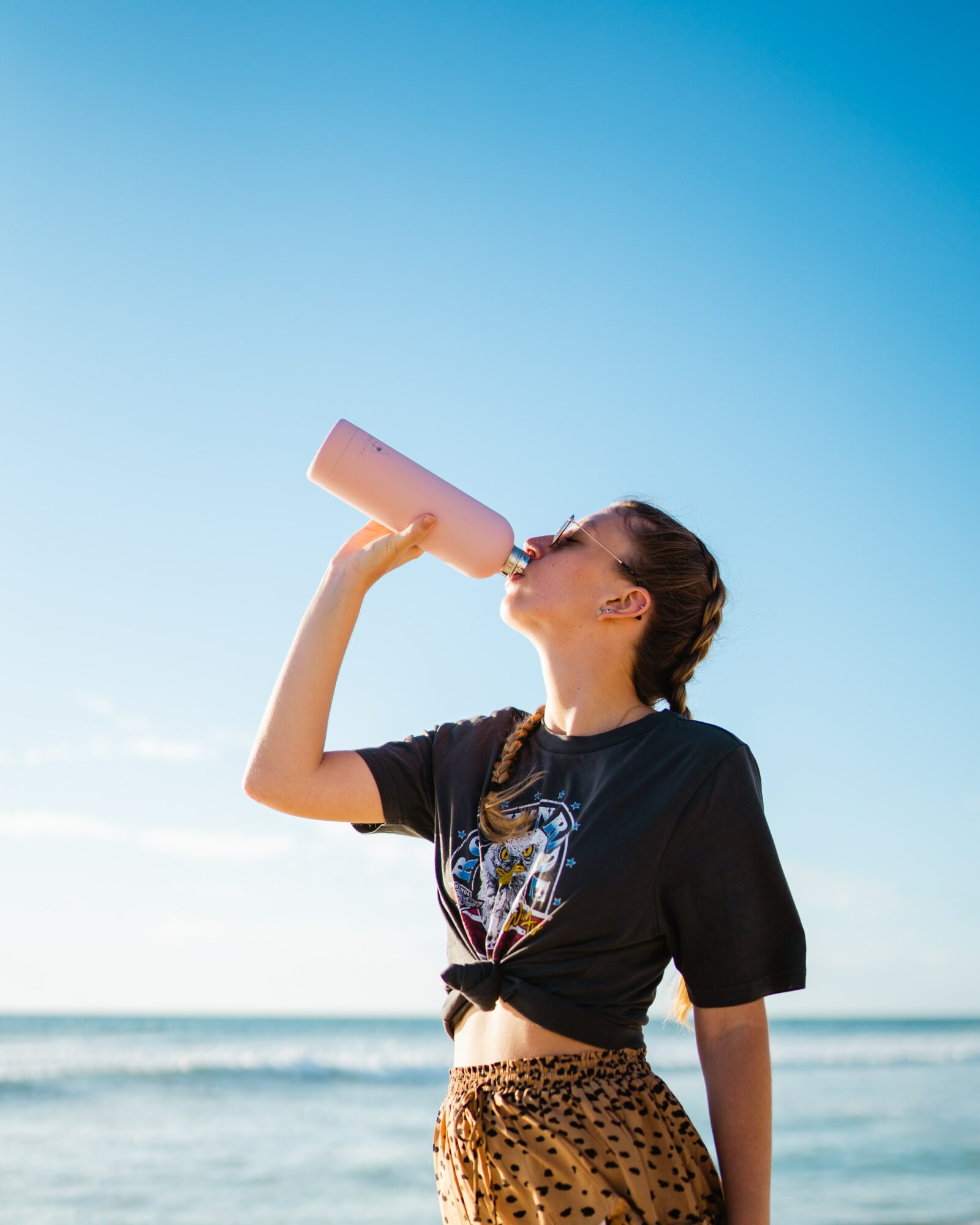
Turning to potassium, in the US, by law, stand alone over-the-counter potassium supplements can provide no more than 99 mg of potassium per capsule. This is because potassium imbalances can lead to dangerous cardiac arrythmias.
(Most people don’t need to worry about this, but if you have compromised heart or kidney function, don’t take extra potassium without checking with your doctor first.) Higher doses of potassium are available in mixed electrolyte products, or through working with a medical or nutrition professional.
In summary

Getting adequate electrolytes is critical to feeling your best on a keto diet. Eating a variety of foods from animal and plant sources will cover most of your nutritional bases, but you might need to pay special attention to getting enough magnesium, potassium, and sodium. Supplements can be helpful if the foods in your diet fall short.
